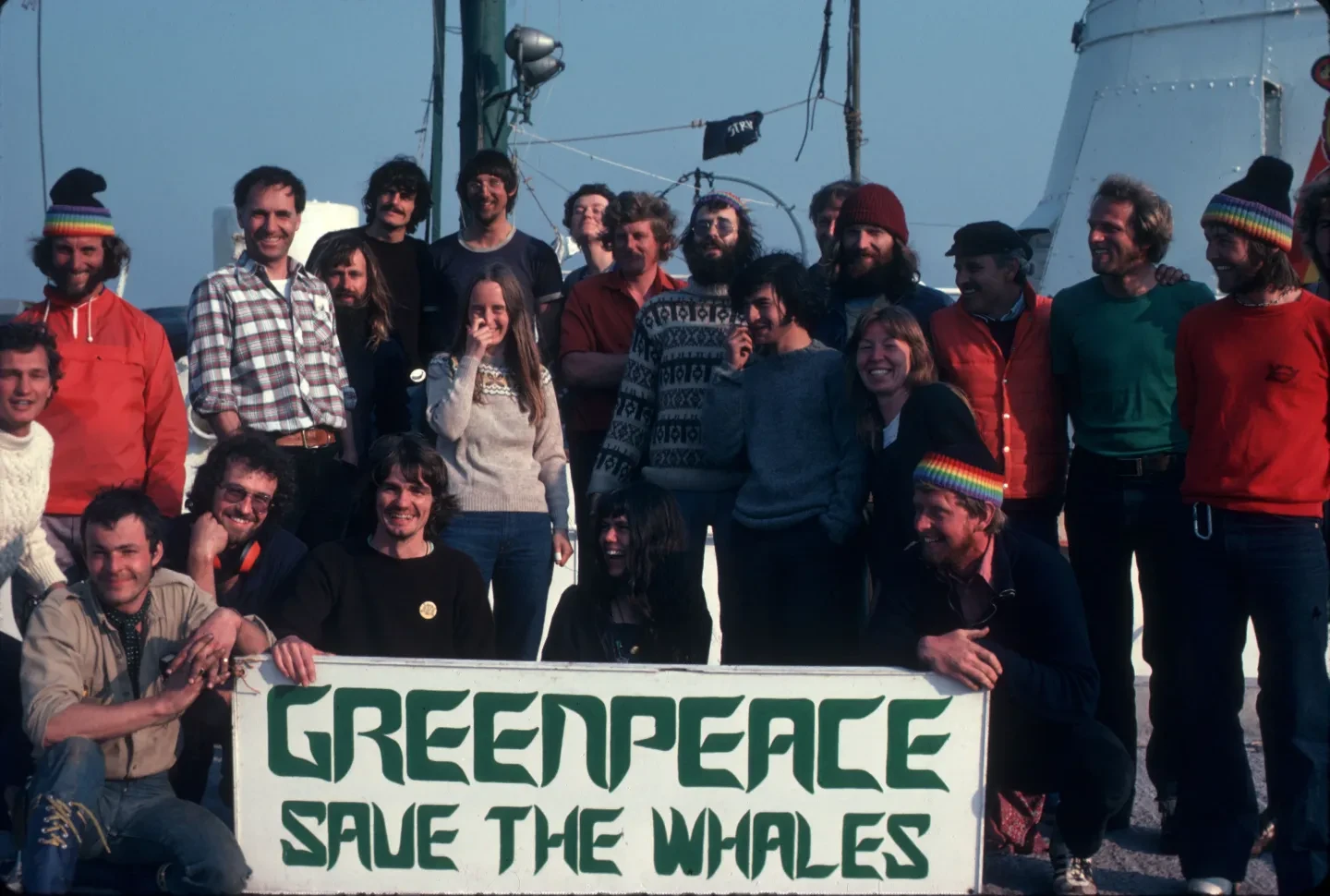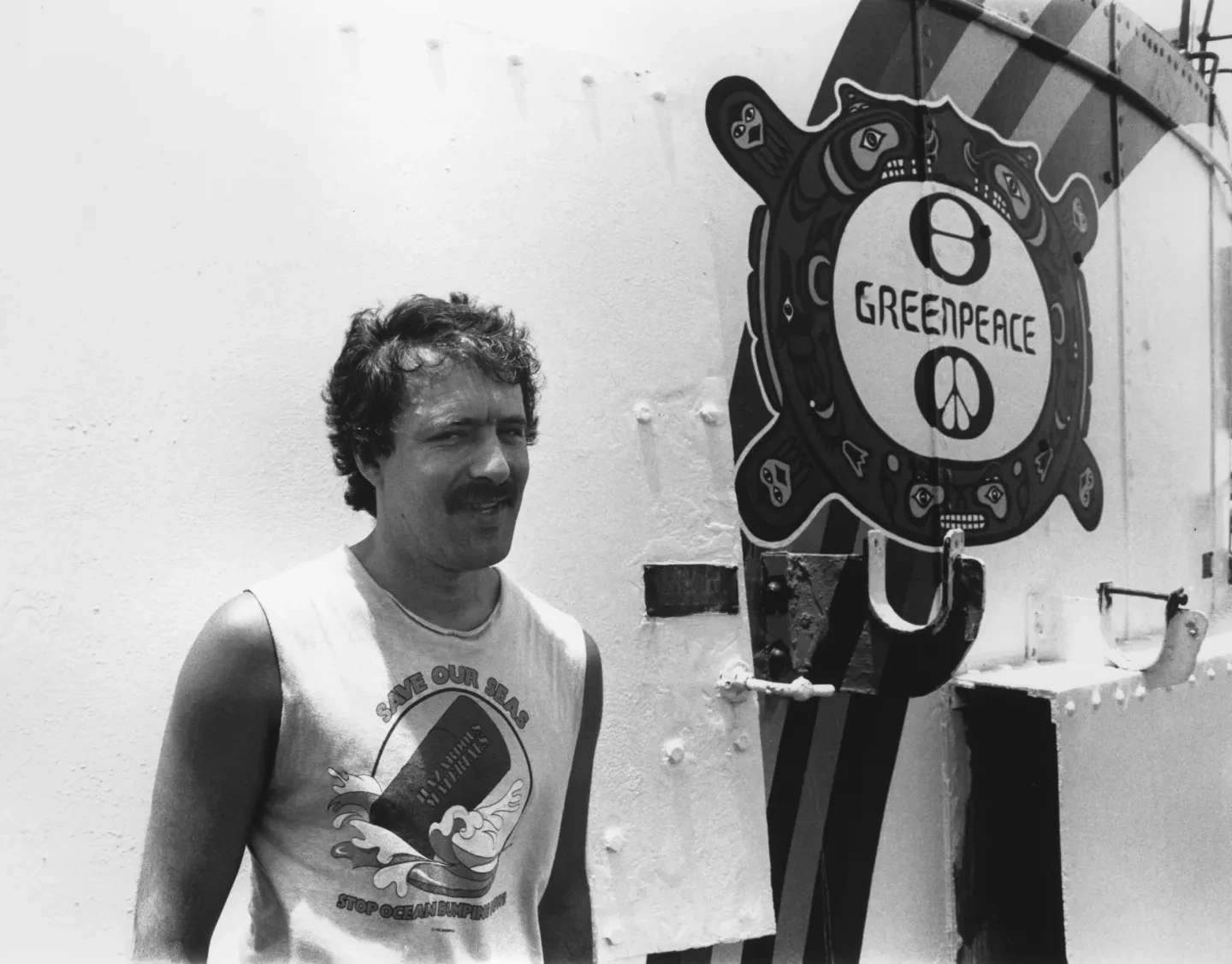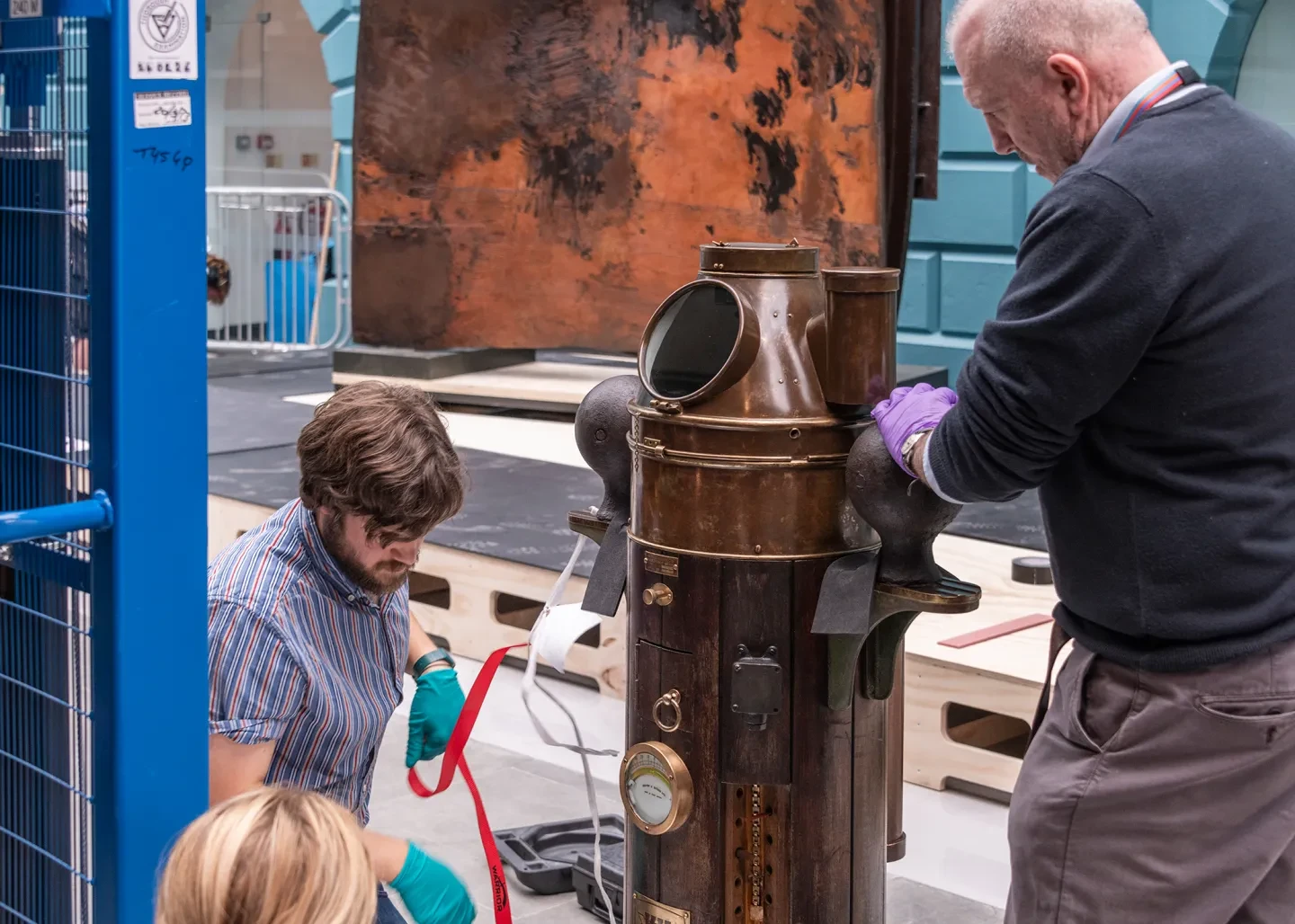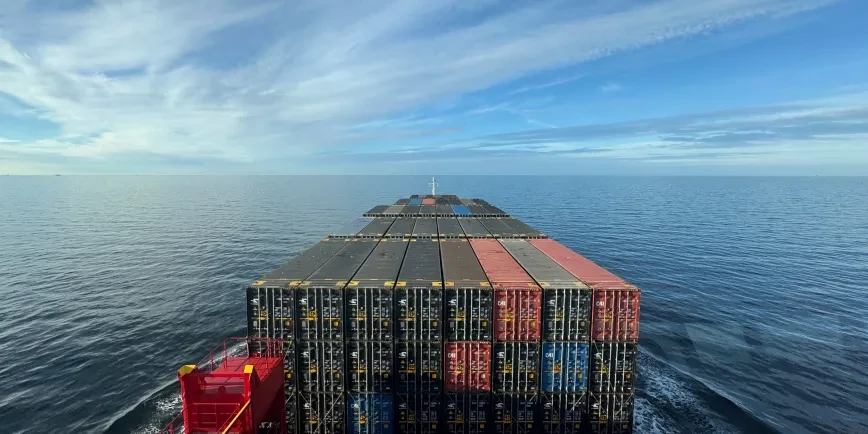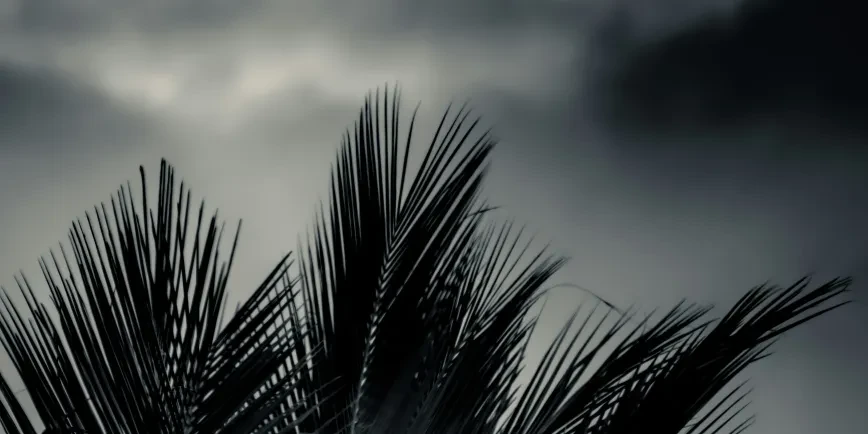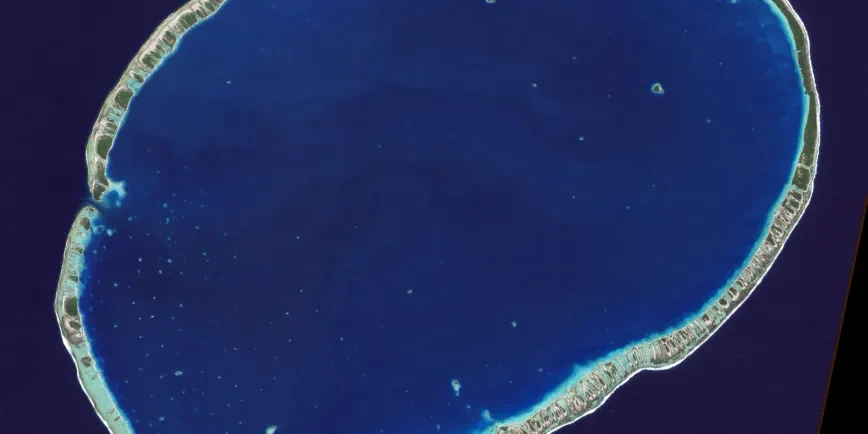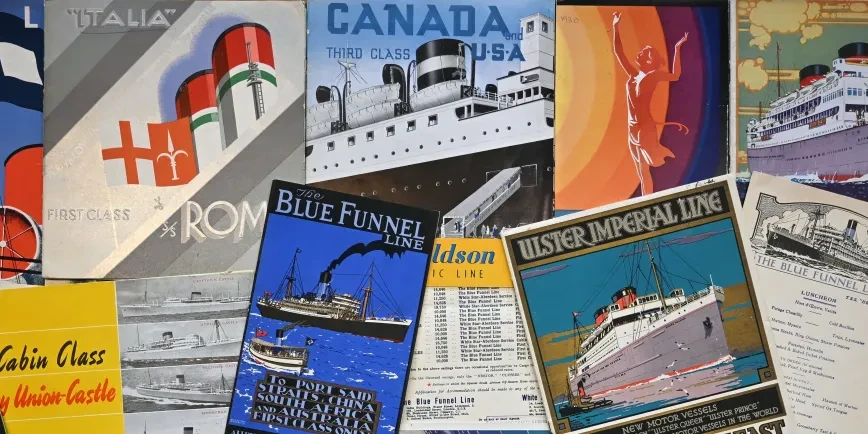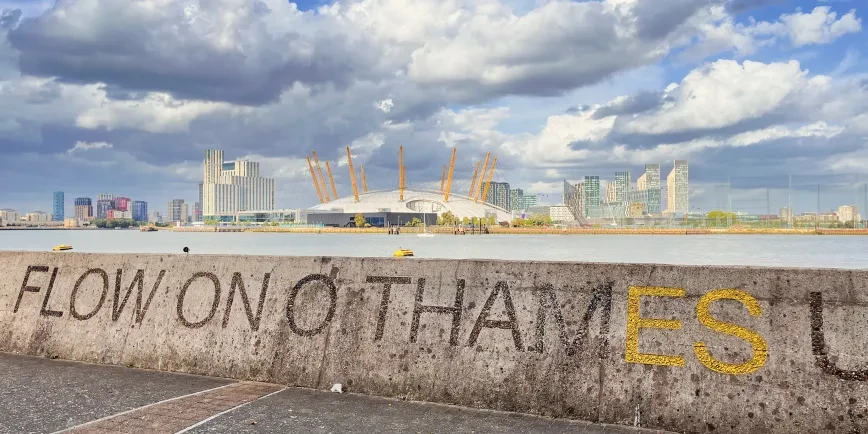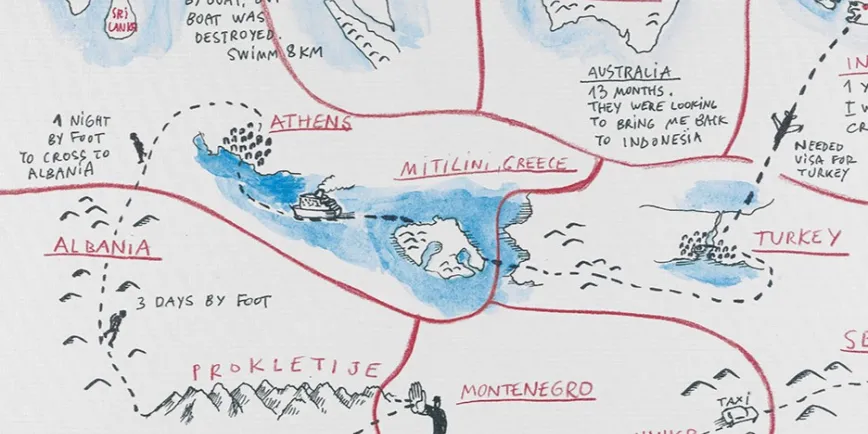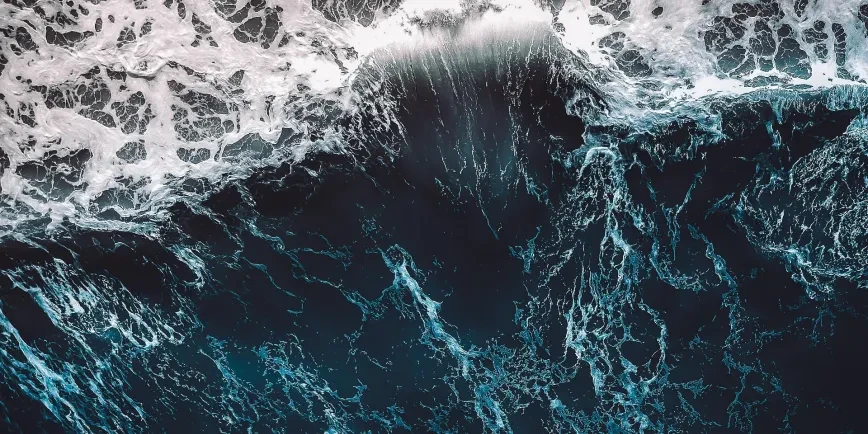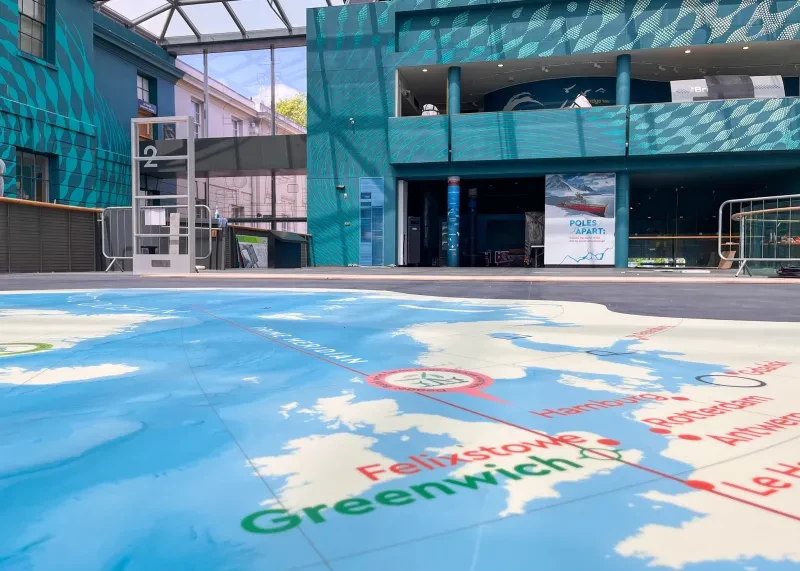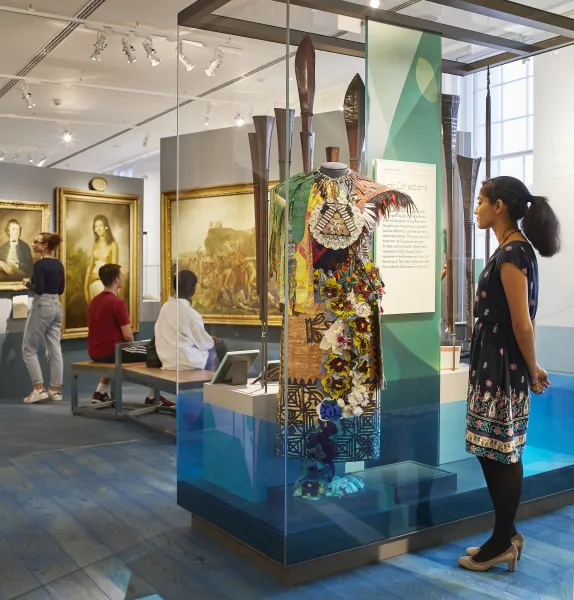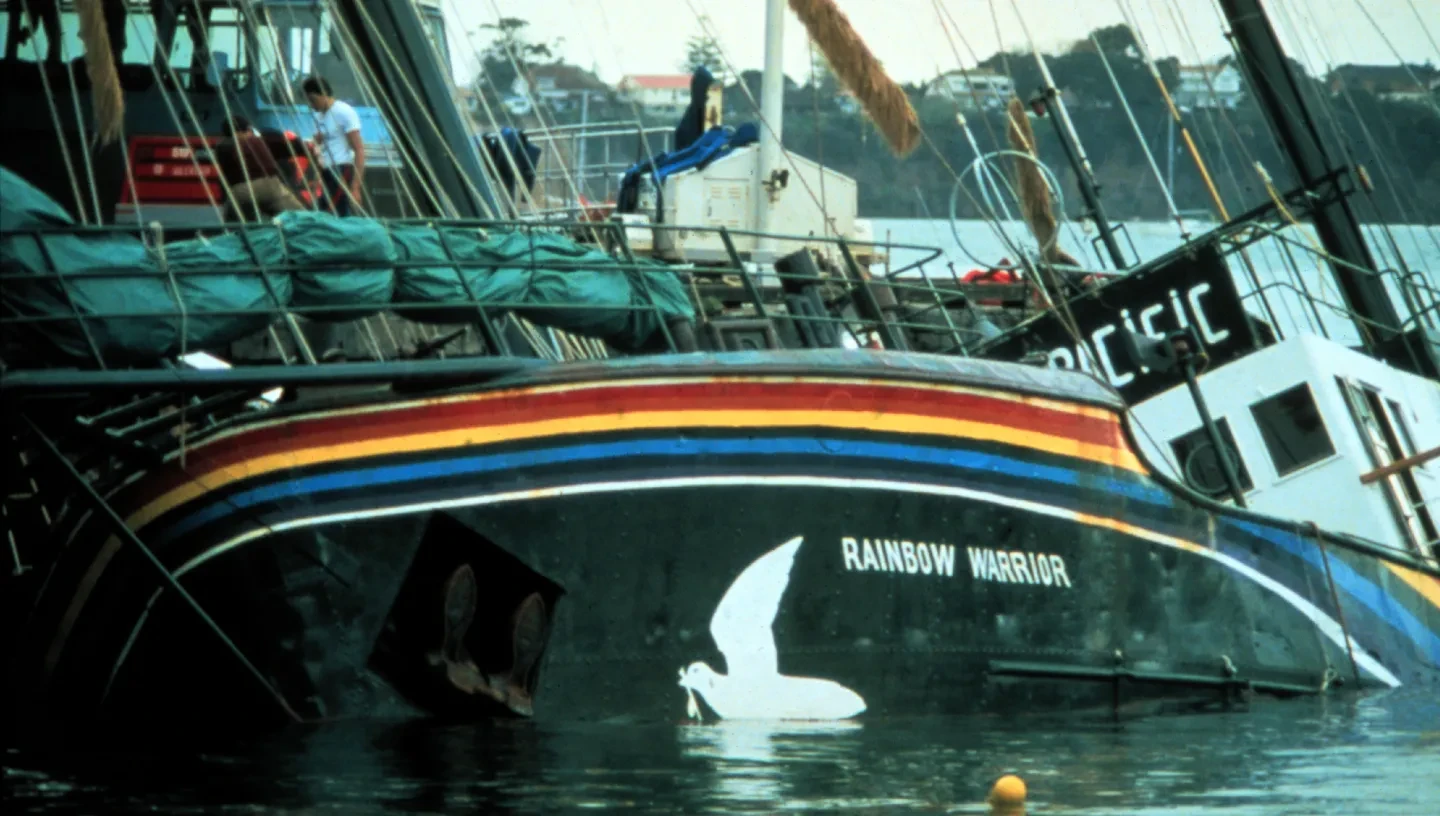
Forty years ago, the attack on the Greenpeace ship Rainbow Warrior and the death of photographer Fernando Pereira caused international outrage.
In 1985 Rainbow Warrior had travelled to New Zealand to campaign against the testing of nuclear weapons in the Pacific by France. On the night of 10 July, the ship was blown up by two devices that had been planted on board by French secret service agents.
Today the history of Rainbow Warrior is being told at the National Maritime Museum. The vessel's binnacle, retrieved from the wreck and later donated to the Museum, is on public display inside the newly opened Ocean Court.
This is the story of Rainbow Warrior.
Nuclear weapons testing and the evacuation of Rongelap
Between 1946 and 1958 the United States carried out a programme of nuclear weapons testing in the Marshall Islands. This included the detonation of ‘Castle Bravo’ at Bikini Atoll on 1 March 1954, one of the most powerful nuclear weapons ever used.
The neighbouring islands of Rongelap and Utirik atolls were severely impacted by the fallout. The residents, suffering radiation sickness, were not evacuated until three days later.
In 1957 it was deemed safe for the residents to return; however, they found that many of their food staples were either no longer available or made them unwell. By 1963 many residents of the Marshall Islands were reporting thyroid tumours, birth defects and high rates of miscarriage.
Operation Exodus
After requesting support from US authorities multiple times, the islanders of Rongelap eventually turned to Greenpeace for assistance.
Greenpeace, an environmental campaigning organisation, was at this time still relatively small. Greenpeace activists had used the ship Rainbow Warrior since 1977 as part of campaigns focused on ocean protection, including operations designed to disrupt commercial whaling. But the ship’s arrival in the Pacific ushered in a new era for the organisation.
In May 1985 Greenpeace launched ‘Operation Exodus’, an ambitious project to move the entire population of over 300 people off the island. Over three days the crew of the Rainbow Warrior relocated the islanders and all their possessions – including houses and livestock – to Mejato, an uninhabited island 180km away.
The Rainbow Warrior then continued to New Zealand, with the intention of leading a flotilla in protest against planned French nuclear tests in the Pacific. At this time France, as well as nations including the UK and USA, viewed the development of new weapons via nuclear testing as vital to security.
The sinking of Rainbow Warrior
For the crew of the Rainbow Warrior, there was no indication of the danger that lay ahead. They spent the evening of 10 July celebrating the birthday of one of the crew.
Many had already headed to bed when, just before midnight, a loud explosion was heard. In the confusion some of the crew assumed that the ship had been accidentally struck by a tugboat in the marina. As the Rainbow Warrior began to take on water, the crew started to evacuate.
It is thought that photographer Fernando Pereira had returned to his cabin to retrieve his camera when a second explosion was heard. The boat sank within minutes, trapping Pereira and resulting in his death from drowning. Pereira was only 35 years old at the time of his death and left behind a seven-year-old daughter and five-year-old son. An obituary by David Robie, a journalist on the Rainbow Warrior, celebrated ‘his joie de vivre – his happiness, enthusiasm and love for fun.’
Opération Satanique
The investigation led by the New Zealand Police, one of the largest in their history, uncovered a covert operation by French secret service operatives in which two limpet mines were placed on the Rainbow Warrior by divers.
France initially denied any involvement, but under intense international and media pressure the French government launched an investigation into the attack. Charles Hernu the French Defence Minister resigned and Pierre Lacoste, Head of the French Secret service (the DGSE), was fired. On 22 September 1985, over two months after the attack, Prime Minister of France Laurent Fabius delivered a live televised address admitted that French agents had been ordered to bomb the Rainbow Warrior.
Two French agents were found guilty of manslaughter, which carried a sentence of 10 years. However, to the outrage of many in New Zealand both would only serve a year before being released on compassionate grounds. No-one else involved has been tried in a Court of Law. In a deal brokered by the United Nations, France agreed to issue an apology to New Zealand and compensation of $13 million.
40 years on: the legacy of Rainbow Warrior
Due to the extensive damage Rainbow Warrior was deemed beyond repair, and the decision was taken to sink the ship to create an artificial reef in the Cavalli islands.
Prior to the creation of the reef however, the bell and binnacle of the Rainbow Warrior were retrieved. The binnacle was donated to the National Maritime Museum by Greenpeace shortly after the attack, and now, 40 years on, it is on public display in Ocean Court.
The original bell continues to travel the world. It was first used on Rainbow Warrior II (launched in 1989) before moving to the current Rainbow Warrior III (launched 2011).
Following international arbitration Greenpeace was paid $8.1 million by the French government. This was used to fund the Rainbow Warrior II.
Rainbow Warrior III has returned to the Pacific for the 40th anniversary. The current crew and a small number of the original 1985 crew joined members of the Rongelap community to commemorate 40 years since the island’s evacuation.
The ship will be in Auckland on 10 July to mark the anniversary of attack, celebrate the ongoing impact of the Rainbow Warrior and look to the future.
‘It is critical to remember that they failed to stop us. They failed to intimidate us, and they failed to silence us […] We cannot be silenced because we are a movement of people committed to peace and to protecting Earth’s ability to sustain life, protecting the blue oceans, the forests and the life we share this planet with.’
Russel Norman, Executive Director of Greenpeace Aotearoa
Our relationship with the sea is changing. Discover how the ocean impacts us – and we impact the ocean – with the National Maritime Museum.
Main image © Greenpeace / John Miller

